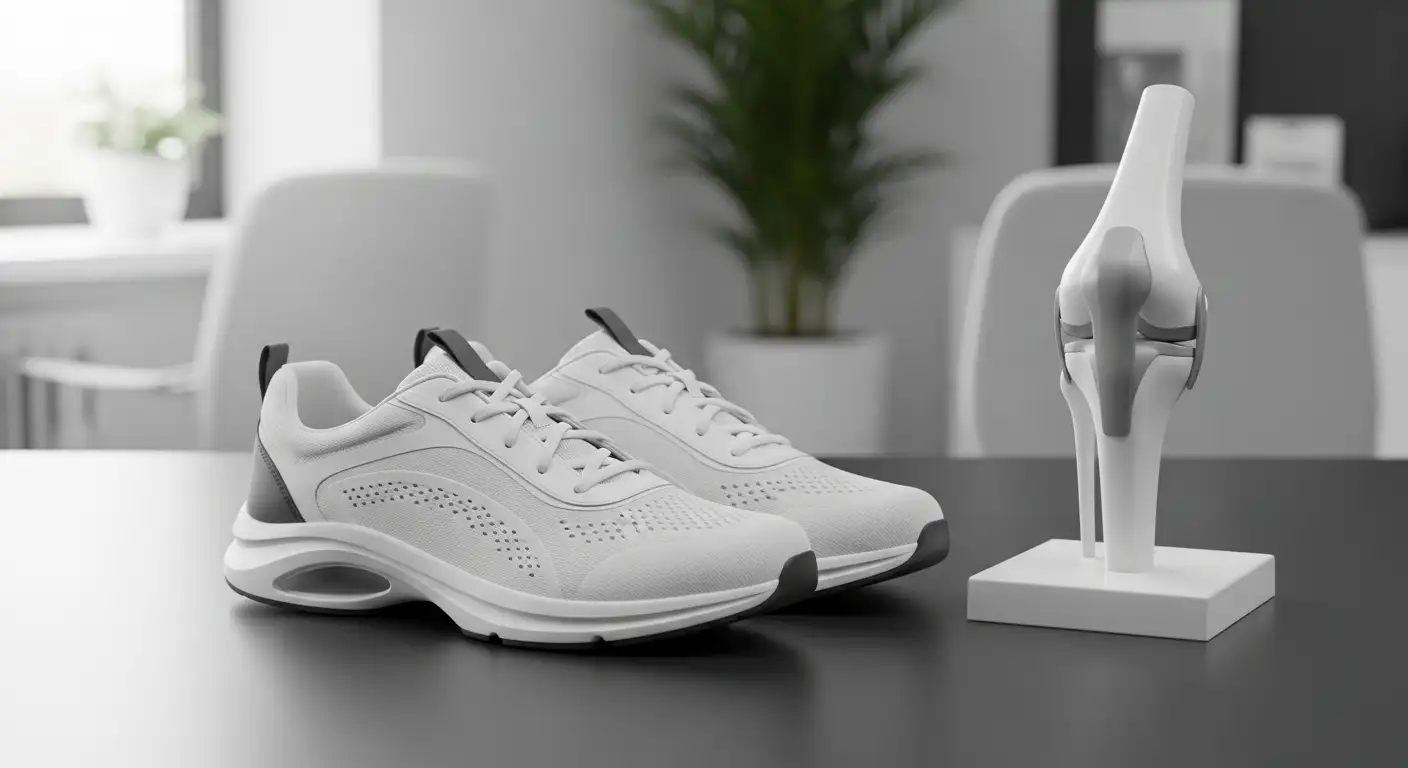Understanding Knee Pain
Knee pain is a common complaint among people of all ages and activity levels. It can manifest in many ways, and understanding the types and causes of knee pain can help guide effective treatment and management strategies.
Types of Knee Pain
Knee pain can be divided into two primary categories: somatic and visceral. Somatic pain is constant and typically stems from superficial injuries, such as cuts, bruises, or burns. On the other hand, visceral pain is often described as a vague, deep squeeze, pressure, or aching sensation. This type of pain is commonly associated with internal organ damage or disease.
In the context of knee pain, somatic pain might be felt on the surface or outer part of the knee, while visceral pain may be experienced deep within the knee joint. One specific type of knee pain is patellofemoral pain syndrome, which refers to pain between the kneecap and the underlying thighbone. This condition is common in athletes and individuals with misaligned kneecaps or arthritis.

Causes of Knee Pain
There are many potential causes of knee pain, ranging from injuries to medical conditions, and even mechanical problems. Injuries such as a ruptured ligament or torn cartilage often result in acute knee pain. These types of injuries are common in sports and other physical activities that involve sudden movements or impacts [2].
Medical conditions, including arthritis, gout, and infections, can also cause knee pain. Arthritis, in particular, is a common cause of long-term or chronic knee pain. This condition involves inflammation and degeneration of the joint, leading to pain and stiffness.
Mechanical problems can also lead to knee pain. For example, issues with the kneecap and thighbone not tracking properly can cause discomfort, especially when standing up or moving the knee. This type of pain is often experienced on the outside of the knee and can be exacerbated by certain movements or positions.
Risk factors for knee problems include excess weight, lack of muscle flexibility or strength, and certain sports or occupations that put stress on the knees. Understanding these risk factors can help in the prevention and management of knee pain.
Specific Conditions and Injuries
While knee pain can occur due to a variety of reasons, certain conditions and injuries can cause specific discomfort, particularly when standing up. This section will expound on three such conditions: swollen knee, ACL injury, and a torn meniscus.
Swollen Knee
A swollen knee, medically referred to as an effusion in the knee joint, occurs when excess fluid collects in or around the knee joint. This condition might result from trauma, overuse injuries, or underlying diseases or conditions.
Pain on the outside of the knee when standing up may be associated with conditions such as a swollen knee, which can cause excess joint fluid accumulation.
ACL Injury
The Anterior Cruciate Ligament (ACL) is a key ligament that helps stabilize your knee joint. An ACL injury is a common cause of knee issues, particularly during sports that involve sudden stops and changes in direction like basketball, soccer, tennis, and volleyball.
An ACL injury can cause pain on the outside of the knee when standing up, especially if it has led to swelling or instability in the knee joint.
Torn Meniscus
The meniscus is a C-shaped piece of tough, rubbery cartilage that acts as a shock absorber between the shinbone and thighbone. It can be torn if you suddenly twist your knee while bearing weight on it.
A lateral meniscus tear, commonly caused by a sudden twisting motion with the foot planted, can lead to considerable pain on the outer side of the knee. Athletes involved in sudden change-of-direction moves are especially vulnerable to this injury. Meniscus tears can occur without a noticeable injury and cause significant pain [4].
Each of these conditions can cause significant discomfort, particularly when standing up, and may require professional medical intervention. It's essential to seek medical advice if you experience persistent or severe knee pain.
Outer Knee Pain Conditions
Outer knee pain conditions often cause discomfort when standing up, moving, or performing certain activities. They usually affect the lateral (outer) part of the knee and can result from various factors, including injuries, physical activities, and age-related changes. Here, we explore three common conditions that cause pain on the outside of the knee: lateral knee pain, iliotibial band syndrome, and osteoarthritis in the knee.
Lateral Knee Pain
Lateral knee pain refers to discomfort that occurs on the outer side of the knee. It can result from inflammation in a tough fibrous tissue on the outside of the thigh that attaches to the shin bone. This condition is common among distance runners and can also be caused by injuries involving twisting or pushing the knee away from the other leg [4].
Additional causes of lateral knee pain may include a lateral meniscus tear, often caused by a sudden twisting motion with the foot planted, and a lateral tibial plateau fracture, often caused by a vehicle accident or a bad fall directly impacting the outer knee.
Iliotibial Band Syndrome
Iliotibial band syndrome (ITBS) is another condition that often causes pain on the outer part of the knee. It is more common in males and often affects runners, as well as athletes who engage in repetitive motions like cycling, climbing, and jumping.
Symptoms of ITBS include pain on the outer part of the knee and outer thigh, caused by repetitive bending and straightening of the knee under intense circumstances.
Osteoarthritis in the Knee
Osteoarthritis (OA) is a degenerative joint disease that can lead to knee pain. It affects more than 32 million adults in the United States and can lead to pain, particularly in the outer compartment of the knee joint as the cartilage wears thin with age.
In OA, the cartilage that cushions the bones of the knee wears away, causing the bones to rub together and leading to lateral knee pain. This degeneration can cause significant discomfort when standing up and may restrict mobility.
Understanding the causes of outer knee pain can help in the diagnosis and treatment process. If you experience persistent knee pain, it's essential to seek medical advice to determine the cause and appropriate treatment options. Regular exercise, stretching, and maintaining a healthy weight can help prevent these conditions and reduce knee pain.
Diagnosis and Treatment
Identifying the source of knee discomfort involves a thorough evaluation and diagnosis, as there are numerous potential causes of knee pain. Treatment is typically tailored to the specific condition and the individual's lifestyle and health status.
Diagnostic Tests
Diagnosing knee problems involves a variety of tests that help visualize the structures of the knee and identify any abnormalities. These may include:
- X-rays: These images provide a detailed view of the bones and can help identify fractures or signs of osteoarthritis.
- Magnetic Resonance Imaging (MRI): This type of imaging can provide a detailed view of the soft tissues of the knee, including cartilage, ligaments, and tendons.
- Computed Tomography scan (CT or CAT scan): CT scans provide a more detailed image than X-rays and can help identify more subtle or complex issues.
- Arthroscopy: A minimally invasive procedure that uses a small camera to examine the inside of the knee joint.
- Radionuclide bone scan: This test can help identify areas of increased bone activity, which may suggest certain types of conditions.
Diagnostic tests will depend on the specific symptoms and potential causes. A healthcare provider will recommend the most appropriate tests based on an individual's specific situation.
Treatment Options
Treatment for knee pain often begins with conservative methods. These may include rest, ice, compression, and elevation (known as the RICE method), pain relievers, physical therapy, and use of a knee brace or other support devices. If these methods do not provide sufficient relief, additional treatment options may be considered, such as steroid injections or hyaluronic acid injections.
Surgical Interventions
If conservative treatment methods fail to provide relief and X-rays indicate significant joint destruction, an orthopedist may recommend surgical interventions. One such procedure is total joint replacement for the knee, also known as knee replacement. This involves removing the damaged joint and replacing it with an artificial joint. The goal of this procedure is to relieve pain and restore function to the knee. As with any surgical procedure, knee replacement carries certain risks and requires a period of rehabilitation.
Understanding the diagnostic and treatment options for knee pain can help individuals with knee discomfort make informed decisions about their care. It's important to discuss these options with a healthcare provider to determine the most appropriate course of action.
Prevention and Management
Preventing knee pain, particularly when standing up, involves a combination of regular strengthening exercises, awareness of risk factors, and lifestyle modifications. These can all contribute to healthier knees and aid in managing existing knee pain.

Strengthening Exercises
Weak muscles, particularly quadriceps and hamstrings, are a leading cause of knee injuries. Strengthening these muscles can help support the knees and prevent injuries. Regular exercise can help ensure that these muscles are strong and flexible, providing stability and support for the knees. Common strengthening exercises include squats, lunges, and leg presses. However, it's important to note that these exercises should be performed correctly to avoid putting additional strain on the knees. Consulting a physical therapist or fitness professional can ensure that these exercises are performed safely and effectively.
Risk Factors
Understanding risk factors for knee pain can help individuals take proactive measures to prevent this condition. These include excess weight, lack of muscle flexibility or strength, and certain sports or occupations that stress the knees. For instance, athletes who engage in activities involving jumping or quick pivoting, as well as individuals whose jobs require repetitive knee movements, are at higher risk of developing knee pain. Reducing these risk factors, where possible, can help prevent knee pain.
Lifestyle Modifications
Making certain lifestyle modifications can also help manage and prevent knee pain. This includes maintaining a healthy weight, as excess weight can put additional strain on the knees and exacerbate pain. Regular low-impact activities such as swimming, cycling, or walking can help keep the knees flexible and strong without causing further damage.
Additionally, activities such as going up and down stairs can exacerbate the pain caused by conditions like iliotibial band syndrome. Modifying these activities, or finding alternative ways to perform them, can help manage knee pain.
Furthermore, it's crucial to wear supportive shoes that provide adequate cushioning and support for the feet and knees. For individuals who stand for long periods, using a cushioned mat can also help reduce the strain on the knees.
By adopting these preventative measures and making necessary lifestyle adjustments, it's possible to manage knee pain effectively and improve overall knee health.
References
[1]: https://www.healthline.com/health/types-of-pain
[2]: https://www.mayoclinic.org/diseases-conditions/knee-pain/symptoms-causes/syc-20350849
[3]: https://www.mayoclinic.org/diseases-conditions/swollen-knee/symptoms-causes/syc-20378129
[4]: https://www.healthline.com/health/knee-pain-outside
[5]: https://www.hopkinsmedicine.org/health/conditions-and-diseases/knee-pain-and-problems
[6]: https://www.cedars-sinai.org/health-library/diseases-and-conditions/i/iliotibial-band-syndrome.html





